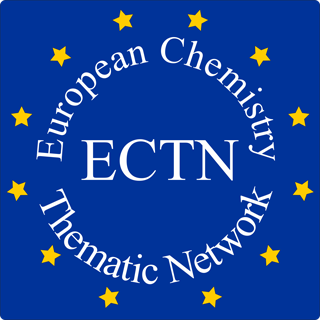Chemistry in Everyday Life
General Aims
While it is known that chemistry plays an important role in daily life and is at the heart of innovations and developments in new sources in energy, in health and in materials for example, it is also associated with the negative terms, like pollution, risk and danger. The public feel that they are poorly informed and this lack of information is the cause of fear towards chemistry.
In this workgroup the general objective is to provide effective examples demonstrated the power of chemistry in everyday life.
The specific objectives include:
(1) Case studies in the areas: energy, health, water, food and innovative materials
(2) New EchemTest® for chemistry in everyday life aimed at the general public
Results
(1) The case study articles were prepared and published on web (www.whatischemistry.unina.it/wp4/). The list of 12 case studies includes:
- Weight Watching, Serendipity and Alternative Sweeteners by Arne van der Gen, University of Leiden
- From dish to engine: transforming waste vegetable oil into biodiesel by Anna Maria Cardinale, University of Genova;
- Drugs by Gustavo Avitabile, University Federico II of Naples
- Polimers in our life by Jadwiga Laska, State Higher Vocational School in Tarnów
- A trip inside a microchip: sand grain with big memory by Francesca di Monte, Associazione Culturale Chimicare
- Poisons surround us by Anna Kolasa, Jagiellonian University, Kraków
- The Silent Assassin: Sources and Toxicity of Carbon Monoxide by Bill Byers, University of Ulster, Anna Maria Cardinale , University of Genova)
- Old and New Pollutants damage our “blue fuel”, but chemistry can save us by Luigi Campanella, Susanne Heidi Plattner; Sapienza University of Rome
- Pollutants in indoor environments by Santino Orecchio and Salvatore Barreca; Università di Palermo
- Chemical detectives by Michał Woźniakiewicz, Jagiellonian University, Kraków
- Water. Do you really know it? by Franco Rosso; Associazione Culturale Chimicare
- Wolfram, a folk with chemistry: farts and tobacco by Laureano Jiménez Esteller, University Tarragona
(2) The new EchemTest® question database focused on various aspects chemistry in everyday life was created, consisting of over 300 questions. The question database content is divided into two difficulty levels (basic, advanced) and into 10 thematic groups:
- Natural materials, natural resources, minerals, and their use in everyday life
- Plastics, innovative materials and their use in everyday life
- Cleaning agents, cosmetics
- Chemistry in agriculture
- Food and health chemistry
- Chemistry of life
- Chemistry and Energy
- Industrial Chemistry
- Environmental Chemistry
- Concepts/terms/ideas that are commonly known but often misunderstood
For the database development the new web platform was designed and created, allowing for submission of the questions by the authors, the question review process, review of the database content, databese maintenance etc.
In total, 471 questions were considered and processed. Each question submitted was initially reviewed by two independent reviewers; the final databese content was reviewed by the panel consisting of 11 experts at the l meeting in Kraków (July, 17-18th, 2015).
Two new EchemTest® tests has been finally designed based on the database content:
- regular EchemTest® variant – a test consisting of 30 questions (20 basic, 10 advanced); the total number of questions used for this variant is 306; the question database content was divided into 30 ‘baskets’ for this purpose; for each individual test solved by the user at the test session, the test consistiong of 30 questions will be composed by the system by random choice of one question from each basket; the test variant can be used in the regular EchemTest® test sessions for students, as well as for individuals;
- the quiz variant – a test consisting of 15 questions (10 basic, 5 advanced); the total number of questions used for this variant is 277; the question database content was divided into 15 ‘baskets’ for this purpose; for each individual test solved by the user at the test session, the test consistiong of 15 questions will be composed by the system by random choice of one question from each basket; the quiz variant can be used for general public at science fairs, etc.
Authors of the questions: Bill Byers, Anna Kolasa, Arne van der Gen, Justyna Ciejka, Ray Wallace, Anna Maria Cardinale, Michał Woźniakiewicz, Marta Salisova, Lucjan Chmielarz, Artur Michalak
Reviewers: Bill Byers, Arne van der Gen , Gustavo Avitabile, Hans-Georg Weinig, Michał Woźniakiewicz, Ray Wallace, Nineta H. Majcen, Marta Salisova, Krzysztof Szczeponek, Artur Michalak
